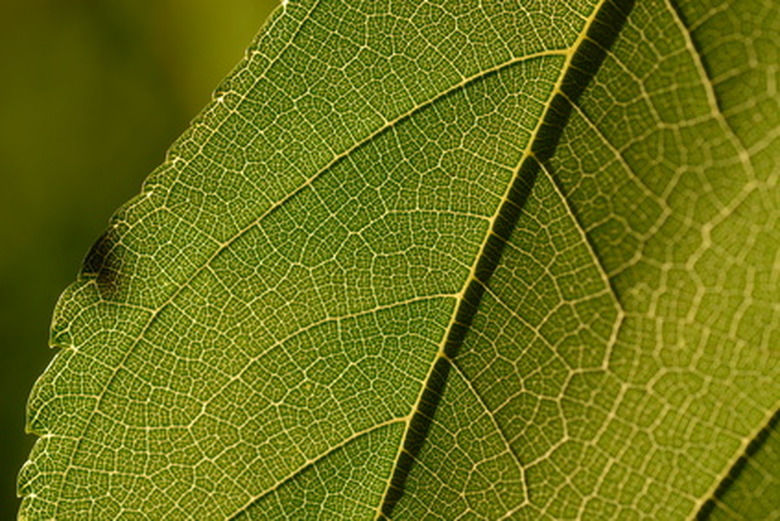How To Make A Plant Cell Model Step-By-Step
Cell models illustrate cell structures in plants and animals. The plant cell may be especially difficult for students to visualize, because it works a little differently than an animal cell. Help your students visualize this unique cell by having them make plant cell models. As the students work, they will have a visual reference, allowing students to recall the information more easily, later.
1. Cell Wall and Cytoplasm
Paint a large, empty shoebox green, inside and out. Let the paint dry overnight. This is the cell wall. Plant cells have a stiff, hard cell wall. Inside the box place pale yellow or clear cellophane, crumpled up. The cellophane represents the cytoplasm, which houses the organelles.
2. Form the Nucleus
Roll a piece of dark pink, self-hardening clay into a ball, about the size of your palm. Cut the ball in half, and glue one half into the center of your shoebox, with the rounded side down.
3. Add the Nucleolus
Roll a ball of light pink clay about the size of a ping-pong ball. Cut this ball in half and press one half, flat side down, onto the flat side of your dark pink ball. The dark pink ball is the nucleus and the light one is the nucleolus. The nucleus is the cell brain and the nucleolus—inside the nucleus—is where DNA is converted to RNA.
4. Nuclear Membrane
Wrap the underside of the nucleus in pink plastic wrap. This represents the nuclear membrane that helps the nucleus hold its shape. Since the top of the model is a cross-section, you do not need to show the membrane on top of the nucleus. Glue the nucleus to the bottom center of the box.
5. Plant Vacuole
Mold a large, semi-square blob of blue self-hardening clay. Place it above the nucleus; it should fill the top half of the box, almost completely. This is a large vacuole. They store water which helps plant cells keep their shape.
6. Endoplasmic Reticulum
Cut two 10-inch lengths of blue wire-edged ribbon. Spread one out and smear it with glue. Sprinkle purple seed beads into the glue, and let the ribbon dry for 10 minutes. Fold both ribbons into accordions and glue them into your box, against the right side of the nucleus. The ribbons are rough and smooth endoplasmic reticulum (ER). Rough ER forms proteins and smooth ER forms lipids.
7. Golgi Body
Fold up a 10-inch length of purple, wire-edge ribbon. Glue it into the box, near the bottom. This is a Golgi body. Golgi bodies export proteins and carbohydrates from the cell.
8. Additional Cell Organelles
Glue pink Swedish fish candies, green sour gummy candies, pink marbles and purple seed beads over the bottom of the box, randomly. These are mitochondria, chloroplasts, amyloplasts (also called leucoplasts) and ribosomes, respectively. Mitochondria create energy, chloroplasts store green chlorophyll, amyloplasts form starch and ribosomes synthesize protein.
9. Centrosomes
Smear orange marbles with glue and roll them in orange seed beads. Glue a few of these beaded marbles into the box, near the nucleus. These marbles are centrosomes. They help the cells divide.
10. Cell Membrane
Line the inside of the edges of the box with green plastic wrap. Glue the plastic wrap into place loosely, so it crumples slightly. This represents the cell membrane. The cell membrane contains the organelles and innards of the cell.
11. Plant Cell Model Key
To help others understand your model, create a key to identify each part of your plant cell project. Glue a small piece of each element of the model onto a separate paper or poster. Neatly label to identify the plant cell model part represented by each sample.
Plant Cells Differ from Animal Cells
Plant Cells Differ from Animal Cells
Plant cells differ from animal cells because plant cells have a cell wall, one especially large vacuole and chloroplasts. An animal cell model would not include these structures.
Things Needed
- Large, empty shoebox
- Green paint
- Pink self-hardening clay: light and dark
- Pink plastic wrap
- Pale yellow or clear cellophane or plastic wrap
- Blue wire-edged ribbon
- Scissors
- Glue
- Purple seed beads
- Blue self-hardening clay
- Purple wire-edged ribbon
- Pink Swedish fish candies
- Green sour gummy candies
- Pink marbles
- Orange marbles
- Orange seed beads
- Green plastic wrap
TL;DR (Too Long; Didn't Read)
Additional plant cell ideas include creating an edible cell from green gelatin filled with candy parts. Use jawbreakers, gummy ribbons, sprinkles and gummy worms, as organelles. Be sure to use a key to identify the elements of the model.
Cite This Article
MLA
Shoop, Megan. "How To Make A Plant Cell Model Step-By-Step" sciencing.com, https://www.sciencing.com/make-plant-cell-model-stepbystep-7724993/. 14 November 2018.
APA
Shoop, Megan. (2018, November 14). How To Make A Plant Cell Model Step-By-Step. sciencing.com. Retrieved from https://www.sciencing.com/make-plant-cell-model-stepbystep-7724993/
Chicago
Shoop, Megan. How To Make A Plant Cell Model Step-By-Step last modified March 24, 2022. https://www.sciencing.com/make-plant-cell-model-stepbystep-7724993/
